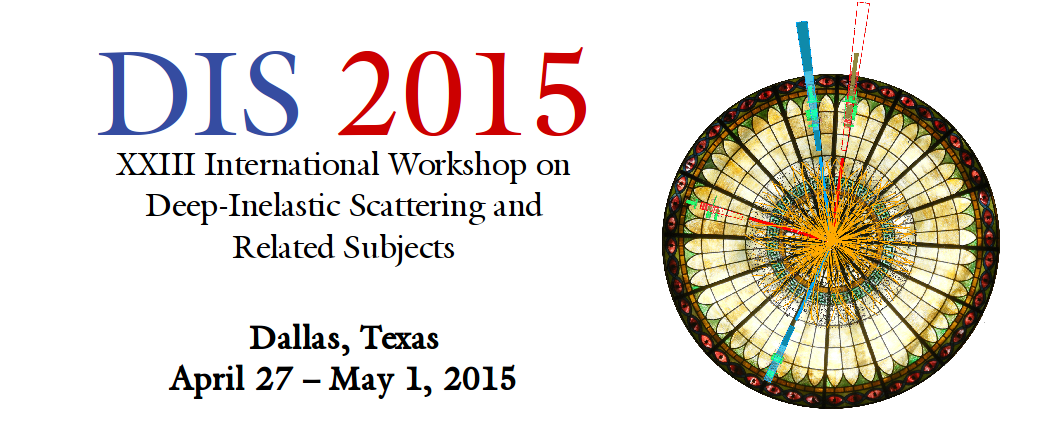Global physics talks at SMU star the tiny proton: a key to unlocking cosmic mysteries & cancer's enemy
The world's scientists convene at SMU April 27-May 1, 2015, to discuss "The State of the Proton": a tiny key to cosmic mysteries and a big ally in the fight against cancer.
 The logo for the DIS 2015 workshop hosted by SMU includes an image of the Dallas Hall oculus as the barrel of a high-energy collider, complete with a “splash event” in which a proton beam hits a focusing shutter and showers the detector with particles. |
Starting Monday, the SMU Physics Department hosts more than 300 of the world’s leading experts on particle physics. The scientists will hold nuts and bolts sessions on questions that drive the world’s leading-edge physics experiments.
The “2015 International Workshop on Deep-Inelastic Scattering and Related Subjects,” is held annually in a world-class city, and this year is hosted by SMU at the Hughes Trigg Student Center.
Workshop sessions start Monday, April 27, and run through Friday, May 1, with physicists rolling up their sleeves to hash out equations, debate and refine algorithms, discuss and develop methodologies, explore spin physics and heavy flavors, and analyze and critique software and hardware developments to ensure the accuracy of the world’s frontline particle experiments.
SMU physicists and others at the workshop include members of the international collaboration that in 2012 made worldwide headlines for observing the Higgs Boson. The Higgs is science’s newest fundamental particle. Its presence was observed after high-energy collisions in the world’s most powerful particle accelerator, the Large Hadron Collider, which straddles France and Switzerland.
After the Higgs discovery, the Large Hadron Collider was paused for an extensive upgrade, and recently restarted — much more powerful than before. As part of Run 2 of the Large Hadron Collider, SMU physicists and students are working with their international colleagues to analyze the structure and nature of the Higgs.
The workshop kicks off Sunday, April 26 with the DIS2015 Workshop Public Lecture hosted by the SMU Department of Physics, “If the universe is the answer … What is the question?”
Featured speakers will address physics questions and some of the possible paths to answering them. The lecture is slated for 6:30 p.m. to 7:30 p.m. in the Hughes-Trigg Student Center Theater.
Particle discoveries pave the way for future technologies that save lives
Particle discoveries by physicists unlock the keys to understanding the cosmos. But they also are ultimately applied to other fields to improve everyday life, such as medical technologies that diagnose and treat cancer.
For example, the first proton therapy center to fight cancer opens in the Dallas area in late 2015, and a second in 2017.
Proton therapy — like MRI’s and PET scans before it — is a non-invasive, precise medical tool. Proton therapy zaps tumors.
We can’t see the proton, but it is a fundamental particle in the nucleus of the atom. Ironically, it takes thousands of physicists collaborating on massive, highly complex experiments like the multi-billion dollar Large Hadron Collider to probe the tiny, invisible world of the proton and other fundamental particles.
###